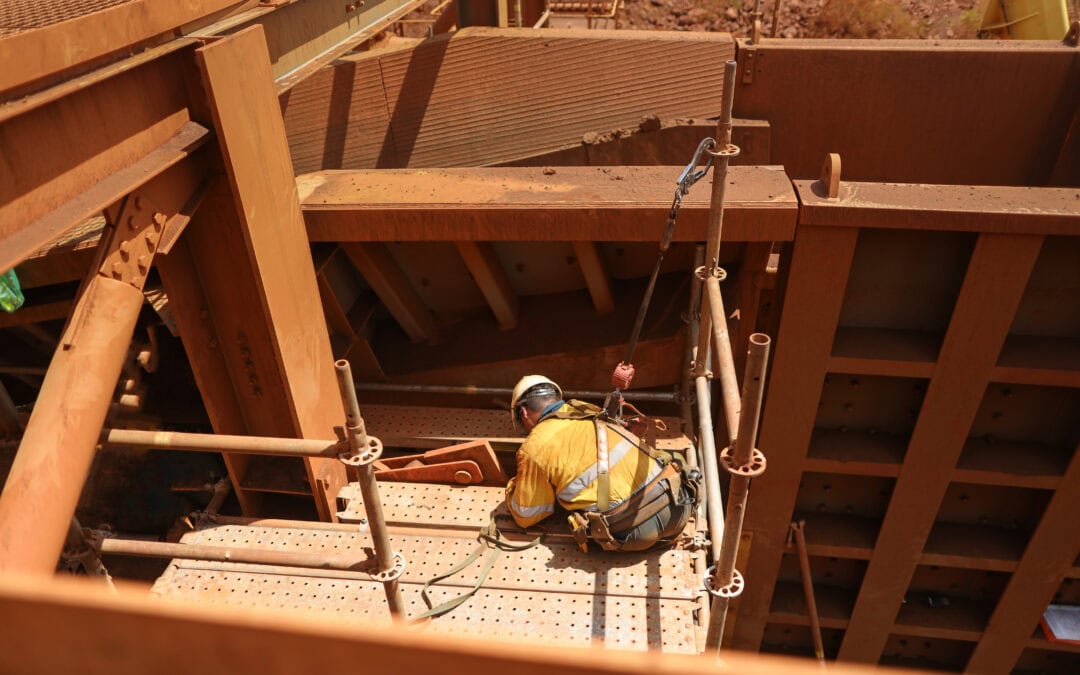Falling object accidents happen when tools, materials, or equipment drop from a height and strike someone below. These incidents rank among the most common industrial accidents on construction and warehouse sites. Sometimes, injuries from these accidents can be quite serious.
Workers and bystanders face serious risks if employers fail to secure loads, guard overhead areas, or maintain safe scaffolding. Proper head protection, toe boards, and tool lanyards help prevent injuries—but when they fail, victims often need an industrial accident attorney to help protect their rights.
Common Examples of Falling Object Accidents
Almost anything can fall from a height. In an industrial setting, common objects include hand tools, power tools, buckets, building components, machine parts, or even small debris. These accidents can happen on scaffolding, in aisles of a warehouse, or around heavy machinery.
Dropped Tools & Equipment
If a tool slips off a worker’s belt, drops from a crane, or tumbles from shelving, it qualifies as a “falling object.” A dropped wrench, hammer, or power tool can strike a coworker’s head or limbs with great force. Even small hand tools can cause concussions or fractures when they hit a helmeted worker. In many cases, lack of tool lanyards, loose pockets, or cluttered work areas leads to these incidents.
Scaffolding Accidents
On construction sites, scaffolding accidents may cause planks, hammers, or nails to drop onto workers below. When workers stack supplies too close to edges or skip guard-rail installation, bricks or boards can tumble down. Even loose debris on scaffolding can turn a routine job into a dangerous incident, leading to serious injury or property damage.
Heavy Machinery Accidents
Heavy machinery like cranes, forklifts, and telehandlers often carry large, heavy objects high above the ground and pose a significant risk for falling object accidents. Overhead cranes can accidentally release beams or buckets of concrete. Forklift operators may also drop heavy items when a load shifts. In warehouses, improperly stacked pallets or boxes can also tip and fall during handling.
Falling Object Accident Injuries
Each of the above scenarios poses a clear risk of head trauma and other injuries, from cuts and bruises to broken bones.
Head and Brain Injuries
When an object strikes the head, it can cause cuts, bruises, or skull fractures. In certain cases, the injured person may also suffer a concussion and traumatic brain injury (TBI). As a result, victims may face headaches, dizziness, or memory loss.
Broken Bones and Spinal Cord Injuries
Heavy tools or materials can break arms, legs, ribs, or hands on impact. Broken bones may need casts, surgery, or physical therapy. If a falling object hits the back or neck, it can damage vertebrae or discs. Victims may suffer nerve damage or even partial paralysis, often leading to chronic pain and limiting their range of motion.
Soft Tissue & Internal Organ Injuries
Certain falling object accident injuries can be more difficult to detect. Sprains, strains, and torn ligaments can occur when a person tries to dodge a falling object. The sudden twist or jolt can injure muscles and tendons. In more serious cases, a heavy impact to the chest or abdomen can harm internal organs like the lungs, liver, or spleen.
What to Do After a Falling Object Accident
In the event of a falling object accident, there are a few steps to take in the immediate aftermath.
Seek Medical Care Immediately
Even if you feel shaken but not seriously hurt, always get checked by a medical professional after a falling object accident. Head injuries, internal bleeding or soft-tissue damage sometimes show up hours or days later. A doctor can spot hidden problems and begin treatment right away.
This not only protects your health but also creates a clear medical record. In many cases, your first medical report is key evidence if you need to file a claim for medical bills, lost wages or pain-and-suffering.
Document the Scene & Witnesses
As soon as you are stable, gather evidence at the accident site. Take clear photos of the fallen object, the area where it landed, guard rails or tool tethers that may have failed, and any warning signs. Note the date, time and weather conditions. Get names and contact details of anyone who saw the incident. Witness statements can support your version of events when you speak with insurers or an industrial accident attorney. Keep any damaged clothing or equipment as proof of the impact.
Report the Accident and File an Incident Report
If this injury occurred at work, tell your supervisor or safety officer about the accident right away. Ask to fill out an official incident report. Be factual and stick to what you saw and felt. A written report starts your injury claim and helps document unsafe conditions or equipment failures.
When to Contact an Industrial Accident Attorney
You should reach out to an industrial accident attorney as soon as possible after the incident. If your employer’s insurer questions the cause of your injury, downplays your medical needs or denies your claim, an attorney can step in to protect your rights.
An attorney will gather site reports, inspect maintenance logs and talk to witnesses. They will also handle all communication with the insurance company so you can focus on recovery.
How a Falling Objects Injury Attorney Can Help
An attorney will review your evidence and guide you through Louisiana’s claim deadlines. If you face mounting medical bills, lost income or long-term disability, an experienced attorney helps you secure fair compensation.
Don’t wait until deadlines pass or evidence disappears—contact a falling objects injury attorney early to guide you through each step of your claim. If you or a loved one has been impacted by a falling object accident, contact us today for a free consultation.

